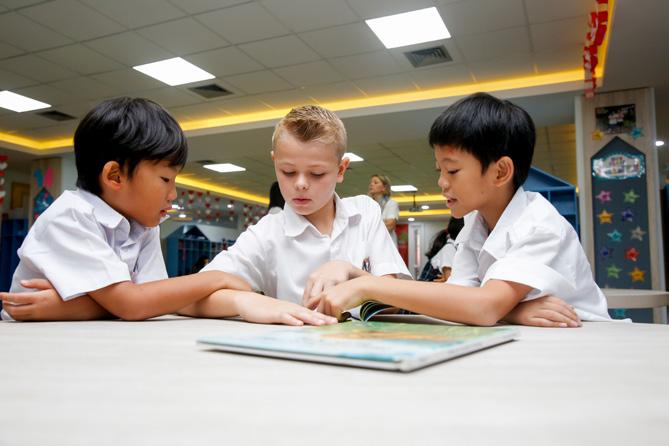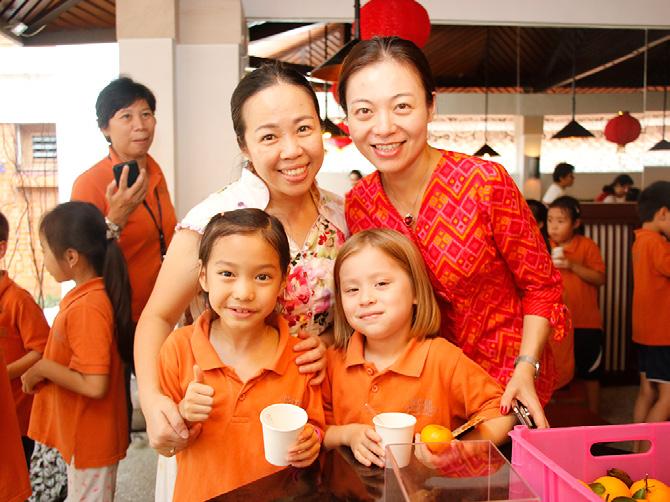
4 minute read
PYP Column
Celebrating Diversity: towards international-mindedness
by Ibu Ratna Putri
Advertisement
Writing this edition's topic on international-mindedness, I googled the keyword "international-mindedness". To my surprise, I got over 9,7 million results in 0.41 seconds. The fact implies that this coined word has been getting more and more attention these days.
What about you? When you read the title of this article, what came to your mind? What is international-mindedness? What makes people internationally minded? Does educating children in an international school shape them into individuals with international-mindedness? With the 14 nationalities at SPH-Lippo Village, what is the potential harm and advantage to each culture? In this edition of Eagle Eye, we will discuss the definition of international-mindedness and how parents can foster the development of international-mindedness at home.

Defining international-mindedness
The IB claims that "International-mindedness is central to the IB mission and is a foundational principle to its educational philosophy; it is at the heart of the continuum of international education." (IBO, 2020)
The IB quoted Oxfam and UNESCO's definition of international-mindedness. Internationally-minded people appreciate and value the diversity of peoples, cultures, and societies in the world. They make efforts to learn more about others and to develop empathy and solidarity towards them to achieve mutual understanding and respect (Oxfam 2105; UNESCO 2015).
The IB (2020) wrote that an internationally-minded learner has the following quality:
• is a competent communicator
• is open-minded and knowledgeable
• is a caring and principled thinker
• uses his or her curiosity and research skills to inquire about the world
• thinks and reflects critically about opportunities and challenges
• takes action for positive changes (for example, to promote intercultural understanding, foster caring relationships, to care for self and others)
• takes risks to further self-development and understanding of others
(Boix Mansilla and Jackson 2011; Oxfam 2015; Singh and Qi 2013; UNESCO 2015).
Does the list of characters above ring a bell? The characters described by the IB may remind you of the learner profile attributes and the approaches to learning (ATL) skills. We discussed those two in the previous editions of this PYP Column.

At home
Parents and adults at home can foster the development of international-mindedness. Some ideas may include the following:
• Encourage your child to be aware of their own feelings and attitudes towards others, being sensitive to the needs of others: How do you feel about it? Did you do the right thing? How can you help? How can you fix the problem?
• Practice listening to other perspectives without making judgment: Listen until the other person finishes making their points. What do you think? Do you agree with their idea? If you don't, how will you express your agreement respectfully?
• Encourage your child to be aware of their own feelings and attitudes towards others, being sensitive to the needs of others: How do you feel about it? Did you do the right thing? How can you help? How can you fix the problem?
• Playing or socializing with different students, including those with different nationalities: How are you different from your friends? How are your friends different from you? How do you show mutual respect?
• Taking responsibility for their own actions: What's the consequence of your action? How do you deal with it? What's your responsibility?
• Sharing your own cultural traditions and stories: How can you continue the development of your mother tongue? How can you keep your home country's traditions although you are away from your home country? How can you introduce folklore from your home countries? How can you share your values and traditions with the school community?

So what?
To conclude, I want to quote what Carolyn Savage wrote about international mindedness, "Put simply, international mindedness means understanding, respecting and valuing different cultures, embracing diversity and knowing that different perspectives have a great deal to offer."
Diversity challenges us to get out of our comfort zone of uniformity to see different colors of the rainbow that enrich our lives. Being international-minded means we still have our cultural identity instead of trying to be the same as others. Celebrate diversity, moving towards international-mindedness!
BIBLIOGRAPHY
"Primary Years Programme: The Learning Community." 29 May 2020, https://resources.ibo.org/pyp/works/pyp_ 11162-51464?lang=en&root=1.6.2.16. Accessed 20 Feb. 2023.
Savage, Carolyn. "International Mindedness - Teachers Are Talking about It, but What Exactly Is It?" HuffPost UK, HuffPost UK, 3 Aug. 2017, https://www.huffingtonpost.co.uk/carolyn-savage/international-mindedness_ b_17585366.html.











